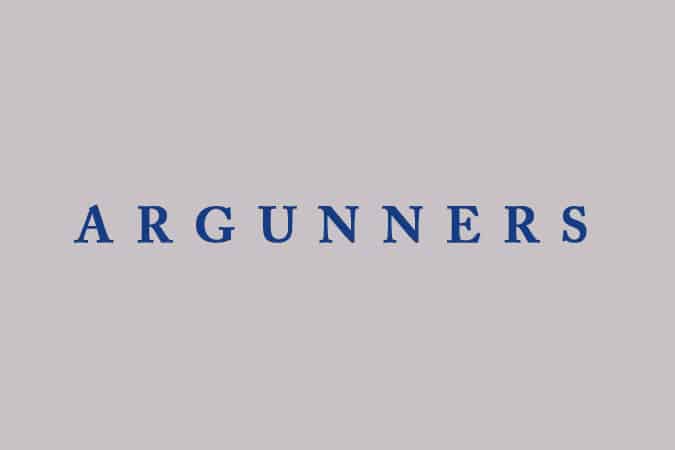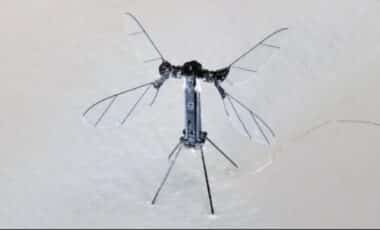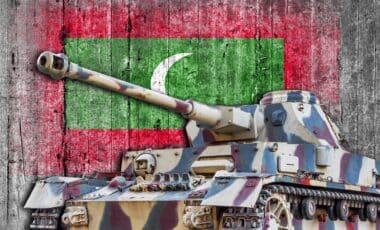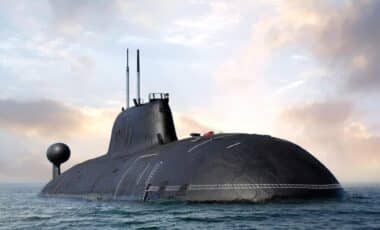With the exception of Poland, no region or territory suffered more greatly during World War II than the Baltic States. Caught between the giants of the Soviet Union and the Third Reich, Latvia, Lithuania, and Estonia became pawns in the desperate battle for control of Eastern Europe throughout the course of World War II. This is a story of conquest and exploitation, of death and deportation and the fight for survival both by countries and individuals. The three states were repeatedly occupied — by the Soviet Union in 1939, by Germany in 1941, and again by the Soviet Union in 1944-45.
In each case, local government organizations and individuals were forced to choose between supporting the occupying forces or forming partisan units. Many would be caught up in the bitter fighting in the region and, in particular, in the huge battles for the Courland bridgehead during Operation Bagration when hundreds of thousands of soldiers would fight and die in the last year of the war. Over 300,000 Soviet troops would be lost during the repeated assaults on the ‘Courland Cauldron’ before 146,000 German and Latvia troops were finally forced to surrender. No mercy was shown and all Latvians, Lithuanians, and Estonians who fought for Germany were executed. By the end of the war, death and deportation had cost the Baltic States over 20 percent of their total population and the iron curtain would descend on the region for over four decades. Using numerous first-hand accounts and detailed archival research, Prit Buttar weaves a magisterial account of the bitter fighting on the Eastern Front and the three small states whose fates were determined by the fortunes and misfortunes of war.
REVIEW: Between Giants: The Battle for the Baltics in World War II by Prit Buttar (ISBN: 978-1780961637). Osprey Publishing.
 As the title of the book indicates, the area including modern day Lithuania, Estonia and Latvia found itself in a less then enviable position around the start of WWII. A persisting fear was confirmed in 1940 when a deal by Ribbentrop and Molotov put the area under Russian occupation once again, only to be “liberated” about one year later by the other “Giant” in the agreement. This “liberation” would however not be the start of peaceful times but rather one of the bloodiest in the region’s history in which the Baltic states lost over 20% of their population to war, death and deportation. The bloodshed from 1940, devastation during the German race towards Leningrad in 1941 and return of the Russians on their way to Berlin in 1945, followed by 40 years behind the Iron Curtain, not surprisingly, left their mark on these countries where they influence matters to this day.
As the title of the book indicates, the area including modern day Lithuania, Estonia and Latvia found itself in a less then enviable position around the start of WWII. A persisting fear was confirmed in 1940 when a deal by Ribbentrop and Molotov put the area under Russian occupation once again, only to be “liberated” about one year later by the other “Giant” in the agreement. This “liberation” would however not be the start of peaceful times but rather one of the bloodiest in the region’s history in which the Baltic states lost over 20% of their population to war, death and deportation. The bloodshed from 1940, devastation during the German race towards Leningrad in 1941 and return of the Russians on their way to Berlin in 1945, followed by 40 years behind the Iron Curtain, not surprisingly, left their mark on these countries where they influence matters to this day.
Starting with an introduction to the region’s history and evolution from little more then a battleground for foreign rulers to fledgling republics in the early 20th century, in the first of 12 chapters the author focusses on their change into totalitarian ruled states and situation leading to and following the 1939 Molotov-Ribbentrop pact. Subsequent chapters elaborate on the Nazi’s own plans for the area like the Generalplan Ost once Operation Barbarossa had been successful as well as the German advance itself. The resulting Baltic Holocaust and uneasy alliance, with what many felt were accomplices in the short but brutal Soviet occupation, are also discussed in detail.
Spared from large military battles throughout 1942 and 1943, the region was once again carved into many bloody front lines from early 1944 on which chapters 6 to 11 elaborate. This goes from the operations around Narva to the Russian breakthrough with Operation Bagration and subsequent German “Doppelkopf” and “Cäsar” counter moves, ending with the Courland pocket-offensive near the end of the year remaining until the end of the war. The devastation of many of it’s economic centers, like many places on the Eastern Front twice in just a few years by each of the “Giants”, together with the troublesome human aspects felt to this day are discussed in the final chapter “Aftermath”.
Throughout the some 400 pages are 14 maps, grouped in the center are 16 pages with pictures and at the end appendixes, extensive endnotes and bibliography information as well as an extract from the author’s book “Battleground Prussia”.
You can purchase this book on Amazon (U.S.).
8.5 Awesome
In a comprehensive way and in depth, with first-hand accounts woven through, both the military and political landscapes in the Baltics preceding, during and after WW2 are laid out in this book. Anyone interested in this area during even just one of these periods will presumably find this book an interesting addition to his or her library.
-
Readability 8
-
Historical Accuracy 9
-
Historical Value 8
-
Details 9
-
Overall Rating 8.5
- User Ratings (0 Votes) 0
Book Kurland Osprey Pritt Buttar Review Schutzstaffel SS Waffen-SS








